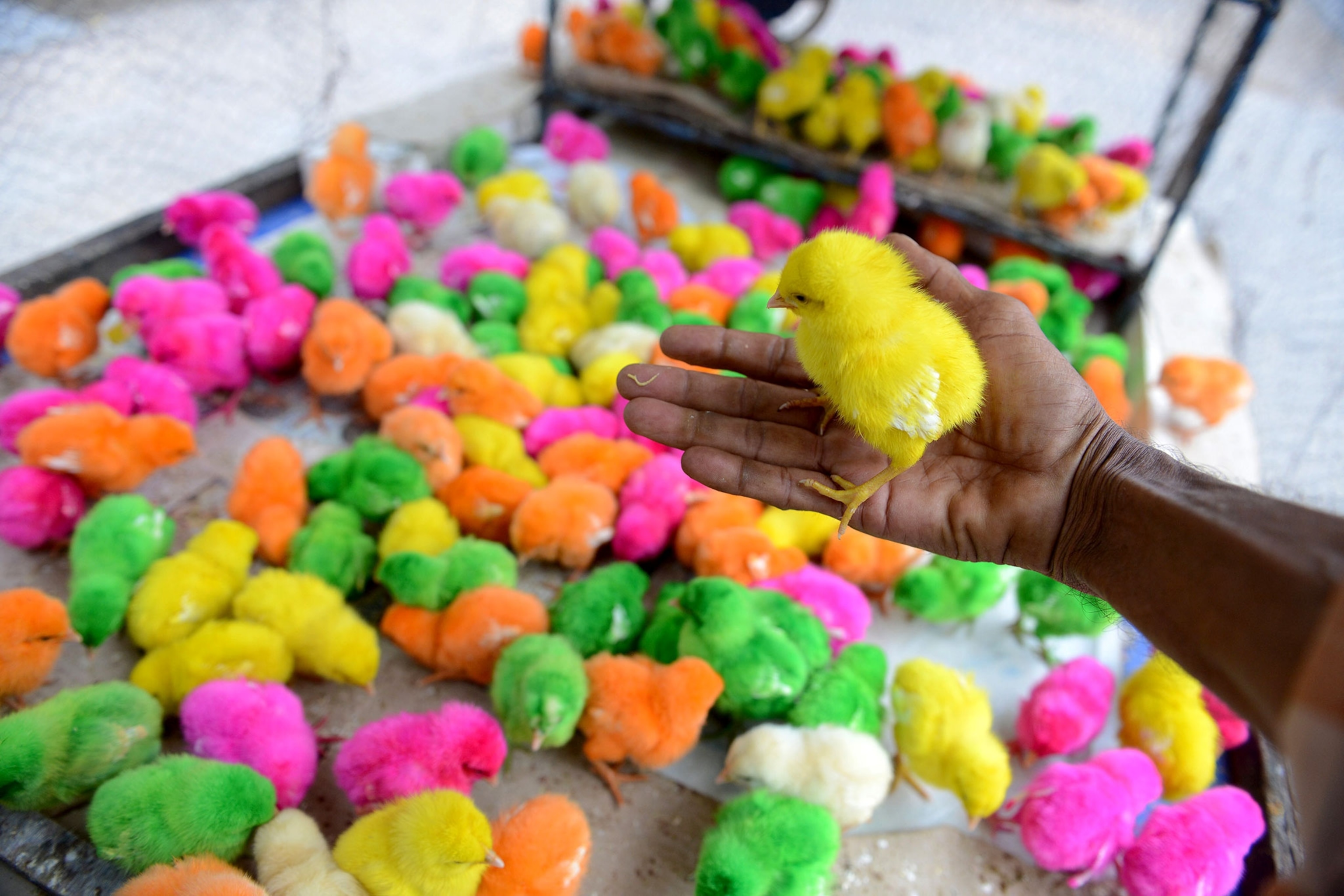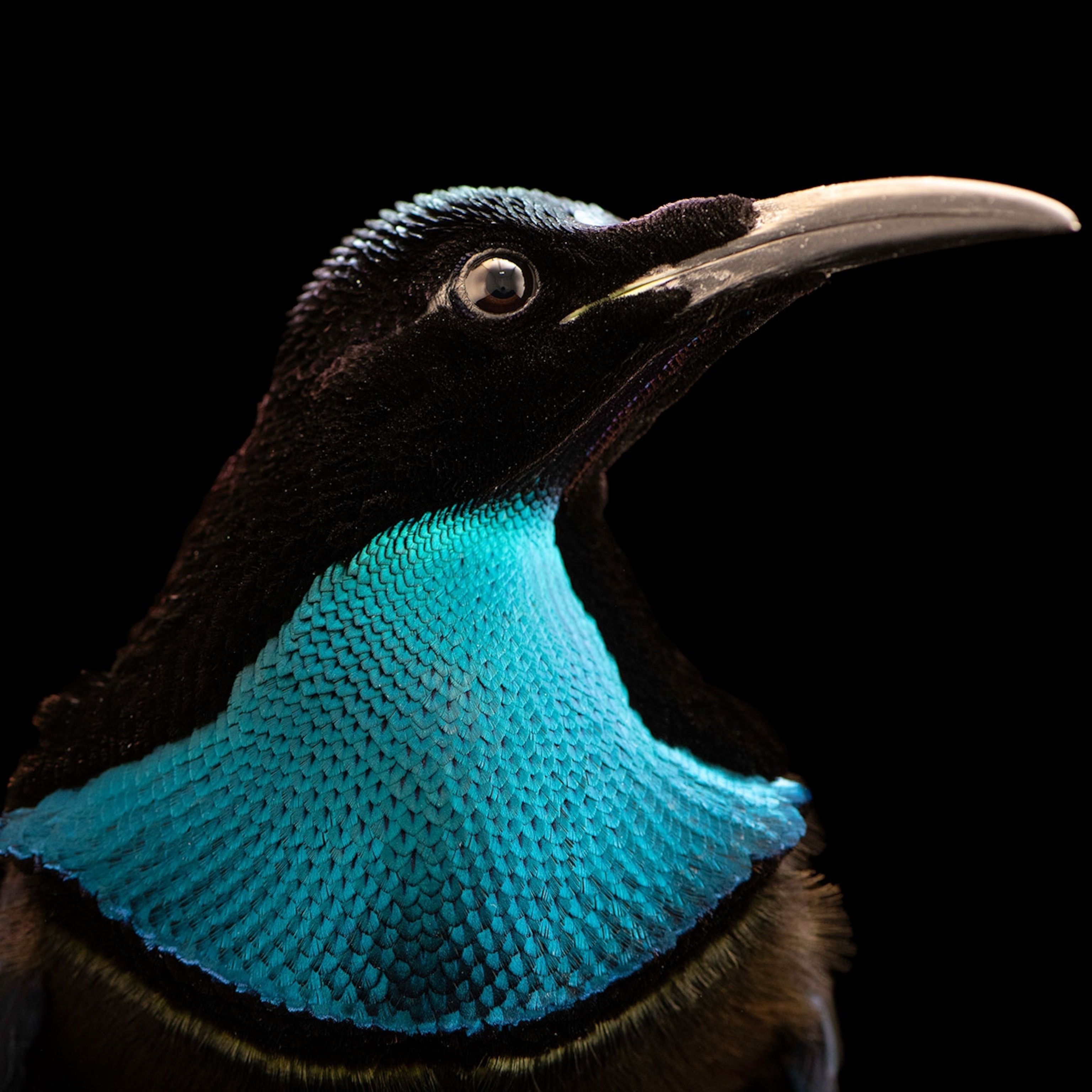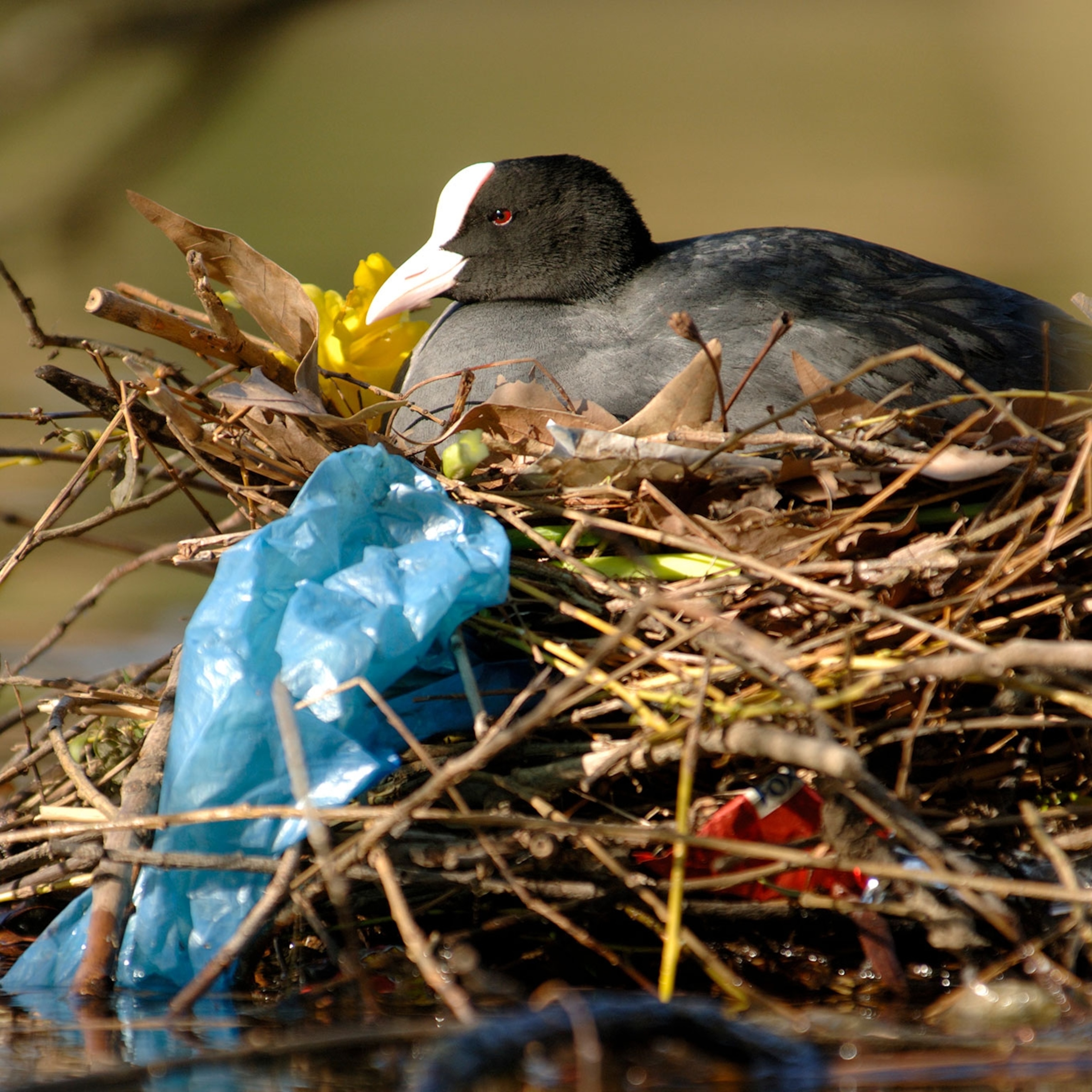
Dyed but Alive, Disguised Birds Skirt Laws and Fetch High Prices
A common sight in India's markets, birds dyed to look like rare and exotic species are a growing problem for both conservation and animal welfare.
Kolkata, India — Stroll down the lanes and alleys of Kolkata’s Galiff Street on any Sunday morning, and you’ll see hundreds of wild-caught native and exotic birds for sale, crammed into wire cages of all shapes and sizes. You’ll hear a cacophony of bird calls and flapping wings. From their makeshift stalls, traders shout all kinds of bird names, vying for customers’ attention.
When I went there in July, I saw jet-black hill mynahs with their neon orange beaks, finch-size green avadavats with their yellow bellies and zebra-striped flanks, lovebirds, cockatoos, and various parakeets.
There were even chicks in improbable shades of flamboyant orange and green. A local vendor peddling a cage full of them said they were the babies of rare birds, in great demand as pets.
Pet birds have long been a part of Indian culture. Folktales and royal texts are replete with mynahs, parrots, and pigeons that adorned imperial courts and entertained wealthy families. Today the birds are still popular as pets, and they increasingly feature as good-luck charms at weddings and other celebrations, where they’re released into the air.
A blanket ban on the sale and export of native Indian birds has been in place for the past 25 years, yet the wildlife trade-monitoring group TRAFFIC has recorded more than 450 of India’s 1,300 native bird species for sale in domestic and international markets.
Furthermore, no prohibition exists on the domestic sale of captive-bred exotic birds in India, so trappers and traders often skirt the ban on the trade of native birds by disguising them as exotics, touching them up with dye, or even paint, to make them look like rarer native birds and increasing their value.
That’s what happened to those bright orange and green chicks. They were dyed.
Bird Disguises
Dyed birds of all species can be found at India’s markets. Take the rose-ringed parakeet, a green bird with gray rings around its neck that is native to India and is a favorite in the pet trade. Some traders will add a dab of catechu, a brown dye from the acacia tree, on its shoulder feathers to make it resemble the less common, more expensive Alexandrine parakeet. Or traders may paint the parakeet’s head orange and sell it as an imported exotic bird. Another disguise: Black dye is applied to the parakeet’s entire body so the trader can sell it as a pricey “rare mutation.” Other dyes used include shoe polish, lamp soot, spray paint, oil, coal dust, textile dyes, and food coloring, says a trader at the Galiff Street market.

Red avadavats, or munias, are dyed to be sold for 10 times more as rare green avadavats. Spotted owlets are stained with tea water and have feathers glued to their heads to be passed off as hard-to-find brown fish owls, which are sacrificed during the Indian festival of Diwali to usher in prosperity, according to Abrar Ahmed, former principal investigator for TRAFFIC India’s live bird trade project. (Related: Photos reveal massive annual falcon hunt in India.)
Many of the dyes contain chemicals that are absorbed by the birds’ skin, which can sicken them, says Nikunj Sharma, a spokesman and government affairs liaison with the India branch of People for the Ethical Treatment of Animals.
And the dyeing process can be traumatic. One person holds the bird by its wings and legs, and the other paints it using dye-soaked cotton. Because traders work fast to color as many birds as they can, they’re often careless, according to Sharma. Dye may drip into the birds’ eyes, causing inflammation or even partial blindness. Chicks may be dipped in a bowl of liquid dye to give them more uniform color. Or they may have liquid poured over them and then be tossed from hand to hand like hot potatoes to even out the color. Because chicks are so delicate, Sharma says, this can kill them.
The deception itself can also put birds at risk. "When the color fades, revealing the original identity of the bird, or when chicks outgrow their painted feathers, many of these species die due to ill treatment of the duped buyers, who do not know what to do with them," says Asad Rahmani, an ornithologist at the Bombay Natural History Society, one of India’s largest wildlife research organizations.
From Forest to Market
Trappers often use cruel and indiscriminate methods to capture birds, such as spreading glue onto branches and using insects or bird decoys as bait. Birds land on the branch and get stuck. In their efforts to free themselves, they may injure their legs or wings, and they often lose feathers. They’re helpless until a trapper shows up to detach them. Later, the birds are cleaned with a mixture of kerosene and cow dung ash. (Related: Across the Mediterranean, millions of birds are killed for food, profit, and cruel amusement.)
Trappers also use very fine, nearly invisible nets to catch birds. Ornithologists use these mist nets to trap birds they want to study, and when used correctly and checked often, they rarely cause harm. But that’s not always the case with trappers looking for birds to sell. Many birds struggling to free themselves from the nets suffer injuries.
Tilotama Varma, with India’s Wildlife Crime Control Bureau, the government organization tasked with combating organized wildlife crime, says there’s a lot of room to improve how India protects its native birds. She wants to see more surveillance along the country’s borders and more law enforcement at markets, and she says certain species should be given India’s highest level of wildlife protection.
Another approach, says Deepak Apte, director of the Bombay Natural History Society, is to pay illegal bird trappers to instead protect birds. The traditional trappers are experts, he says, with knowledge and skills that can be put to good use. "With this, more than 10,000 trappers in India can be converted into protectors."
Moushumi Basu is a freelance journalist from India with a passion for writing about wildlife and the environment.
Read more stories about wildlife crime and exploitation on Wildlife Watch. Send tips, feedback, and story ideas to ngwildlife@natgeo.com.







